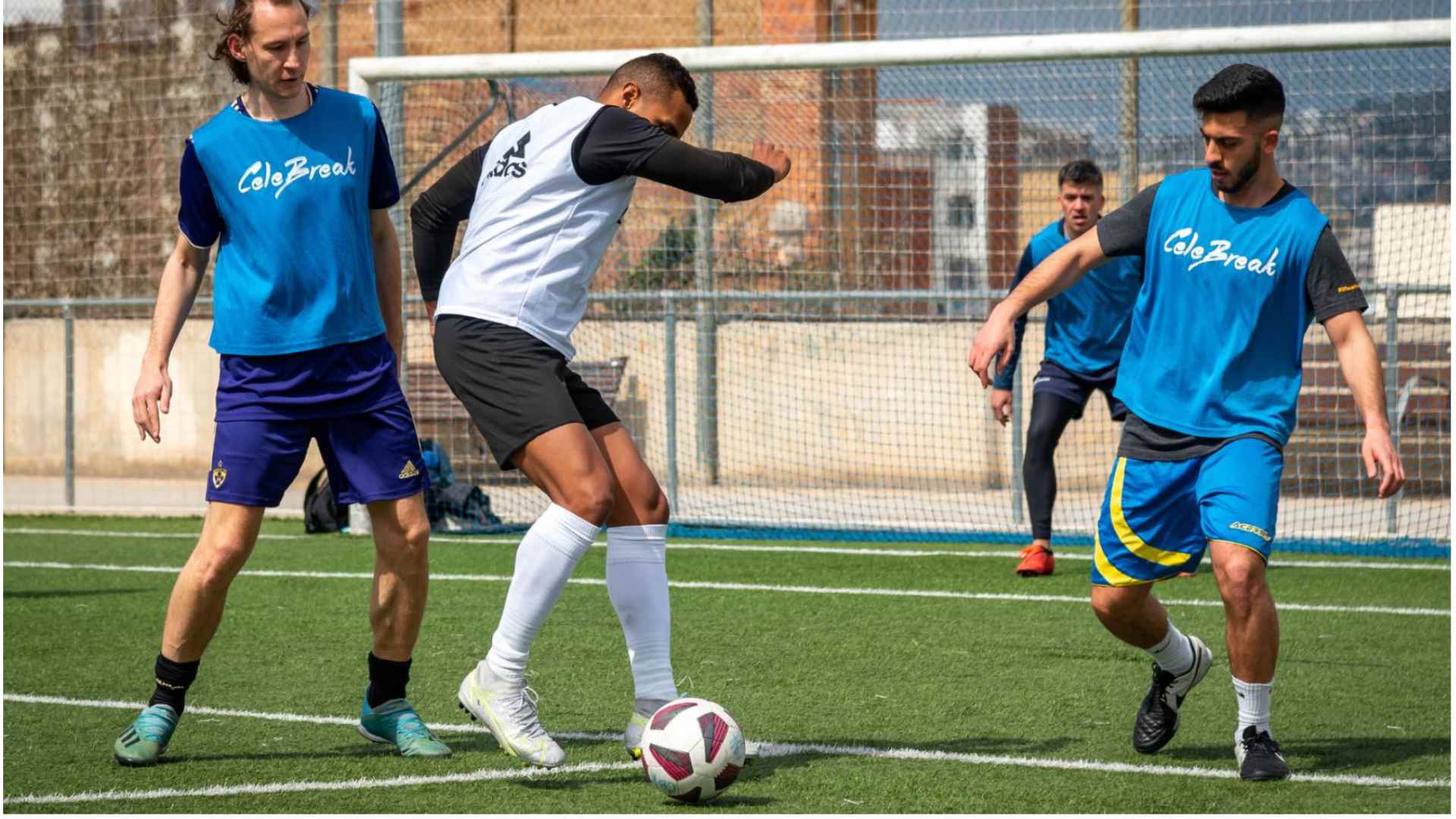The indirect free kick is much more than just a rule in football. It is an opportunity to demonstrate skill, intelligence, and creativity.
These free kicks are an opportunity for the offensive team to generate a dangerous play by sending the ball into the opponent’s area and taking advantage of the chance to score a goal.
Well executed, an indirect free kick can change the course of a game. It can be the key that unlocks a tight defense or the play that puts a striker in a position to score.
Therefore, mastering this game aspect can be essential for a team.
What is an indirect free kick?
It is a sanction given in soccer that allows a team to restart the game after an interruption caused by a foul committed by the opposing team.
The “indirect” aspect of this free kick means that another player must touch the ball after the lift has been taken and before a goal can be scored.
Unlike a direct free kick, the ball cannot be sent directly into the opponent’s goal to score.
Fouls leading to an indirect free kick
You should know that not all fouls result in an indirect free kick. This type of shot is awarded primarily for fouls that do not involve physical contact.
Some of these fouls include playing dangerously, impeding an opponent’s progress, and handling the ball with the hands (by the goalkeeper in certain circumstances).
To fully appreciate the dynamics of the indirect free kick, you need to become familiar with these fouls and how they affect the flow of play.
Important rules of the indirect free kick
Once this free kick is awarded, the benefiting team can reorganize and prepare for it.
The ball is placed at the point where the foul was committed, and all players must be at least 9.15 meters away to be collected.
The ball must be stationary when the kick is taken, and the kicker may not touch the ball again until another player has touched it.
sanctions
If these rules are breached during an indirect free kick, an indirect free kick will be awarded to the opposing team from where the offense occurred.
If a player from the opposing team comes within 9.15 meters of the ball before the shot is taken, they will be shown a yellow card.
Finally, if the ball goes directly into the opponent’s goal without any other player touching it, a goal kick will be awarded to the opposing team.
If the ball goes directly into the team’s goal, taking the free kick without any other player touching it, the opposing team will receive a corner kick.
Strategies for the indirect free kick
The indirect free kick can be a valuable strategic tool if used correctly.
Teams can use the indirect free kick to their advantage in several ways.
A common tactic is the short play. Here, the player taking the free kick tags the ball to a nearby teammate, who then returns it or passes it to other players on the field.
This strategy is effective for maintaining possession of the ball and opening spaces in the opposing defense.
Another common tactic is the long shot. In this strategy, the player taking the free kick shoots the ball into a specific area of the field, usually near the opponent’s goal, in the hope that one of his teammates can control it and score.
Why is an indirect free kick dangerous?
An indirect free kick can be a dangerous opportunity for the attacking team and a significant concern for the defending team.
Here are some reasons:
Surprise factor: These free kicks are often taken quickly and can surprise defenses if they are not well organized or prepared for them.
Positioning: Depending on where the indirect free kick is awarded, it can present an excellent opportunity for the attacking team to get into a dangerous position.
If executed correctly, an indirect free kick can allow a clear shot on goal or a pass to a player in a good scoring position.
Strategy: Teams often have plays set up expressly for indirect free kicks.
These plays can involve distracting moves, quick passes, or accurate shooting, which can be difficult for the defense to anticipate and stop.
Disruption: These free kicks can disorganize a defense set up and positioned for a direct free kick. This can open spaces for attackers.
Frequently asked questions
When must an indirect free kick be awarded inside the penalty area?
This free kick is awarded inside the penalty area when the goalkeeper commits one of the following offenses: holds the ball in his hands for more than six seconds before releasing it touches the ball with his hands after it has been handed over by a teammate team with their feet, or touches the ball with their hands after it has been released from their hands and before another player touches it.
Where is the ball placed for an indirect free kick inside the penalty area?
If an indirect free kick is awarded inside the penalty area, the ball is placed where the offense occurred. Players of the opposing team must remain outside the penalty area and at least 9.15 meters away until the kick is taken.
Can a player be sent off for committing an offense that results in an indirect free kick?
Generally, the offenses resulting from this free kick are not severe enough to warrant a direct ejection. However, if a player receives a second yellow card for the crime, he will be ejected from the match.
How long does the team have to take an indirect free kick after it is awarded?
There is no set time, but the referee usually allows enough time for the players to position themselves correctly. However, play must be resumed promptly, and a team may be penalized if the referee feels that it is unnecessarily delayed.
CeleBreak, a solution to playing soccer
If you don’t have the CeleBreak App on your mobile phone, it’s time to download it.
It is available for iOS and Android operating systems, and you can register using your Facebook account.
In the App, you will find the dates, times, and locations of all the friendly matches organized by CeleBreak.
You can play on natural or artificial grass fields or in closed gyms and any modalities, women’s, men’s, or mixed football.
Download CeleBreak, register, and play!



